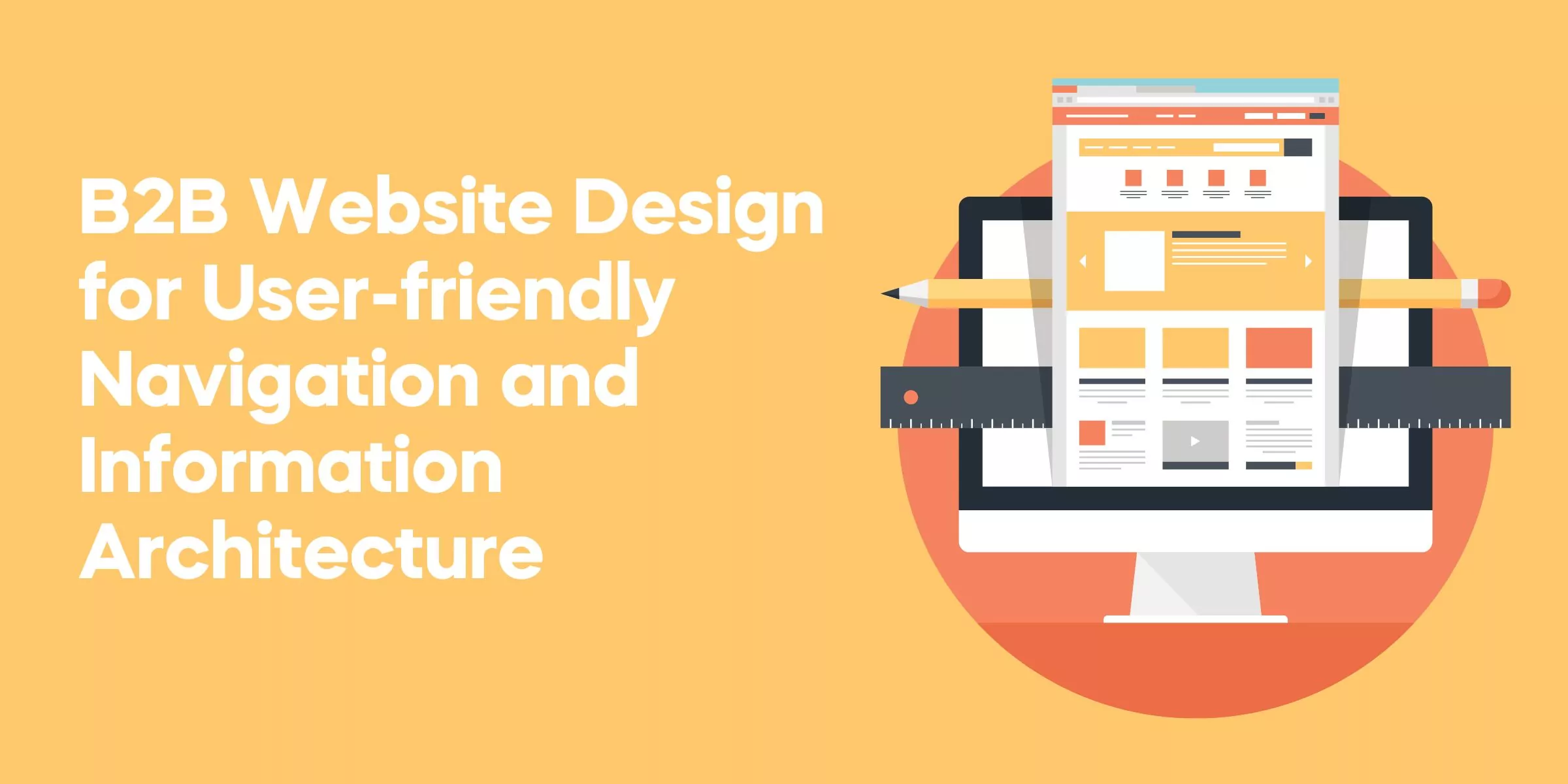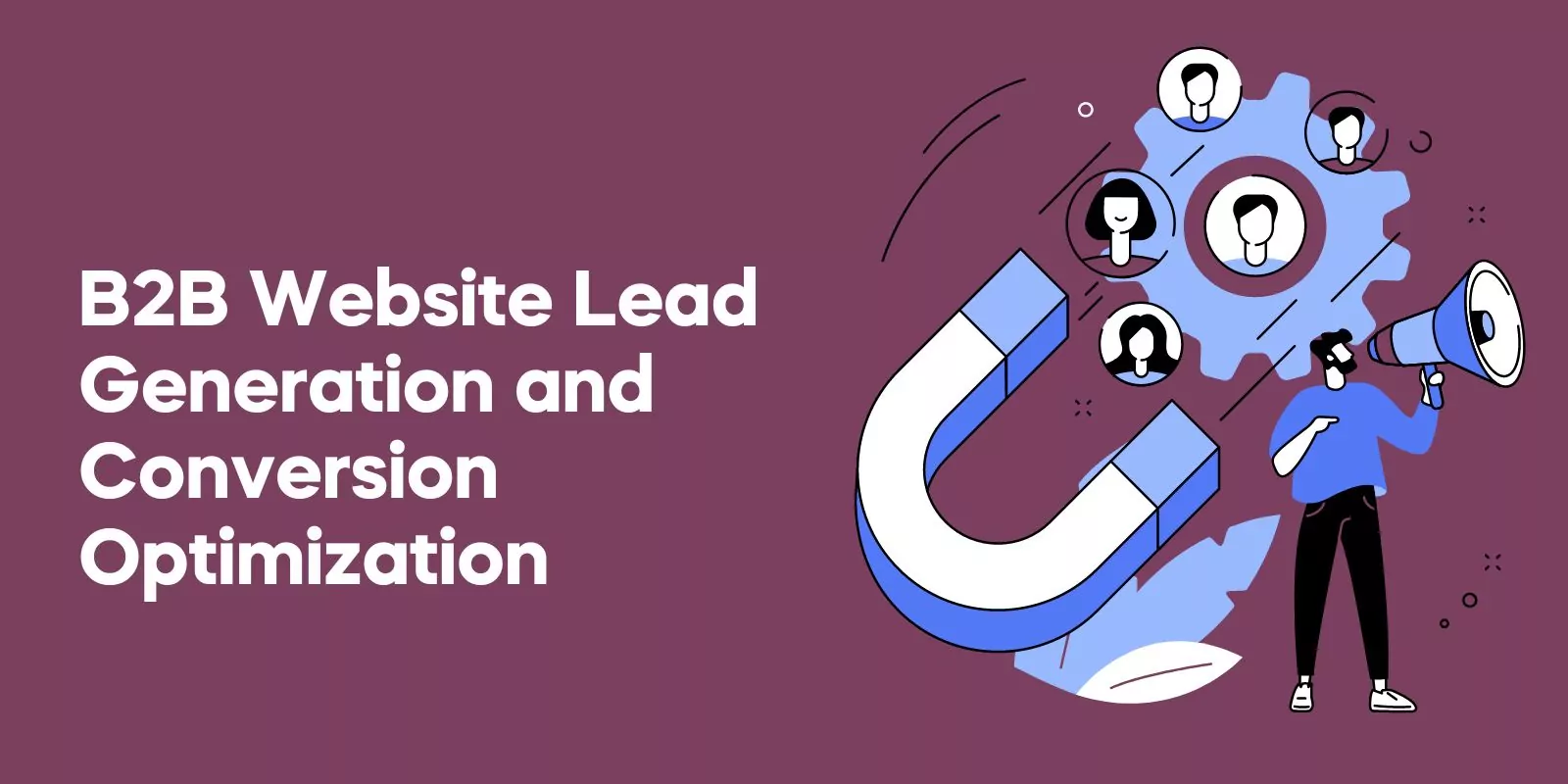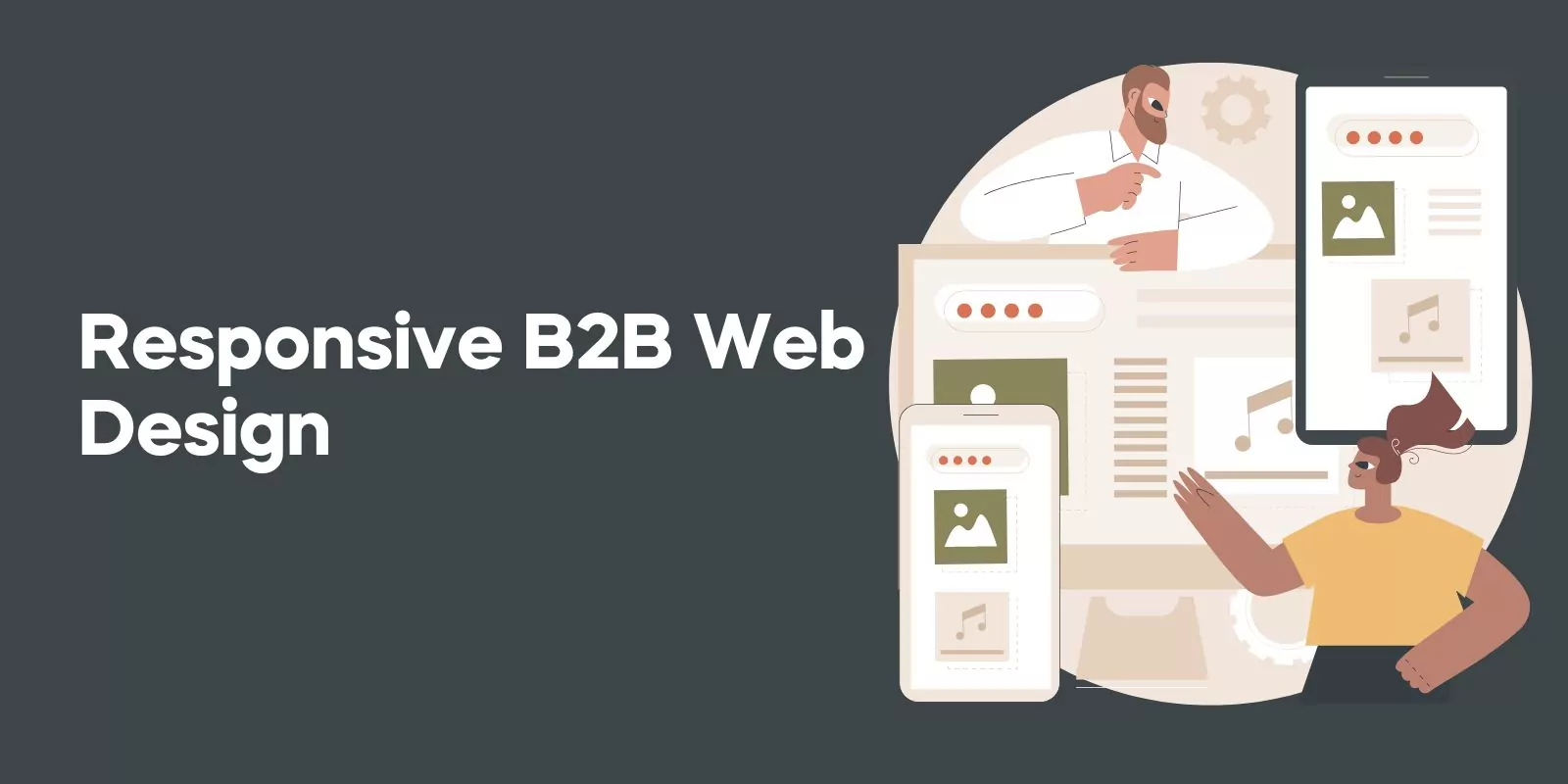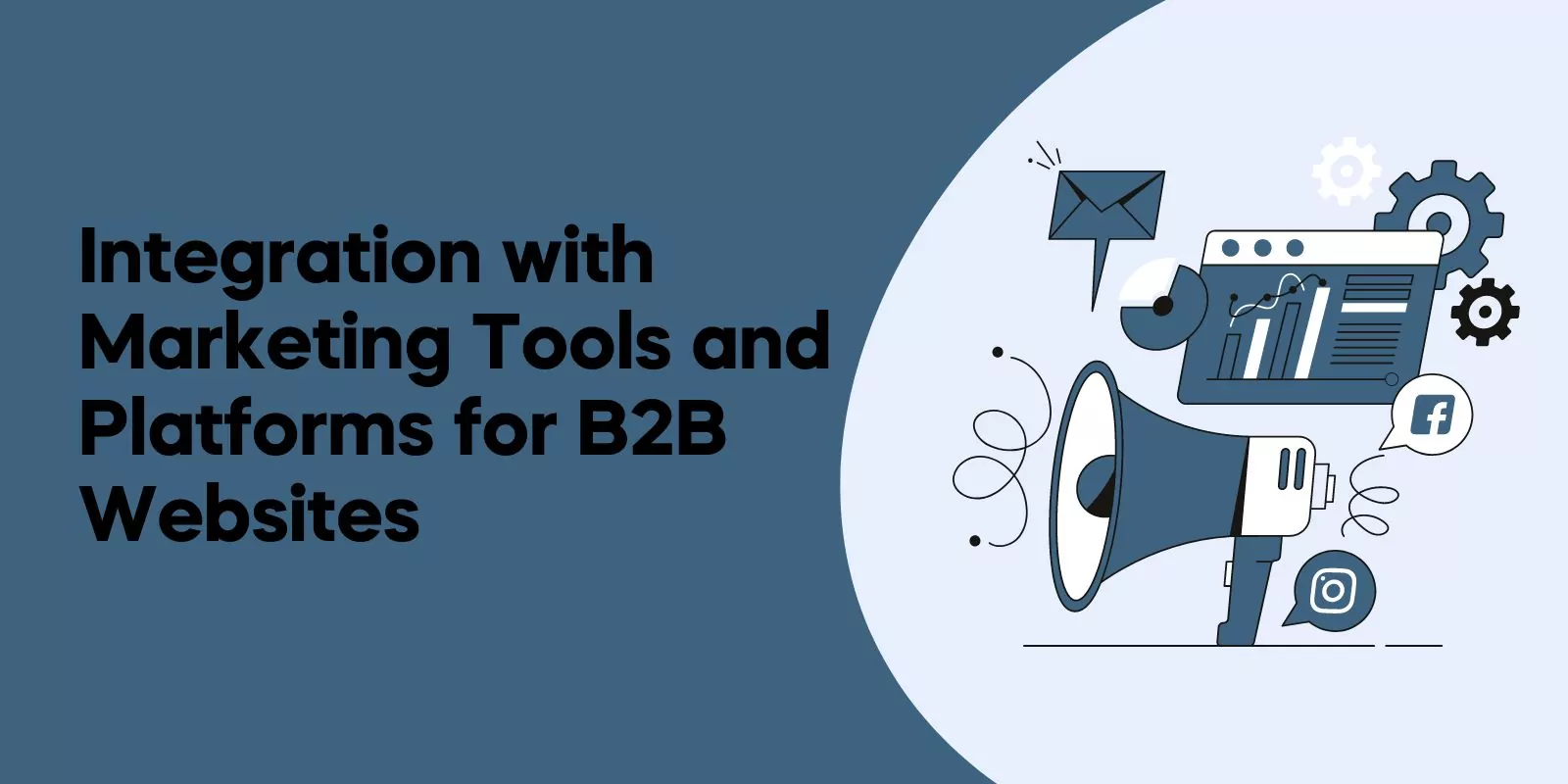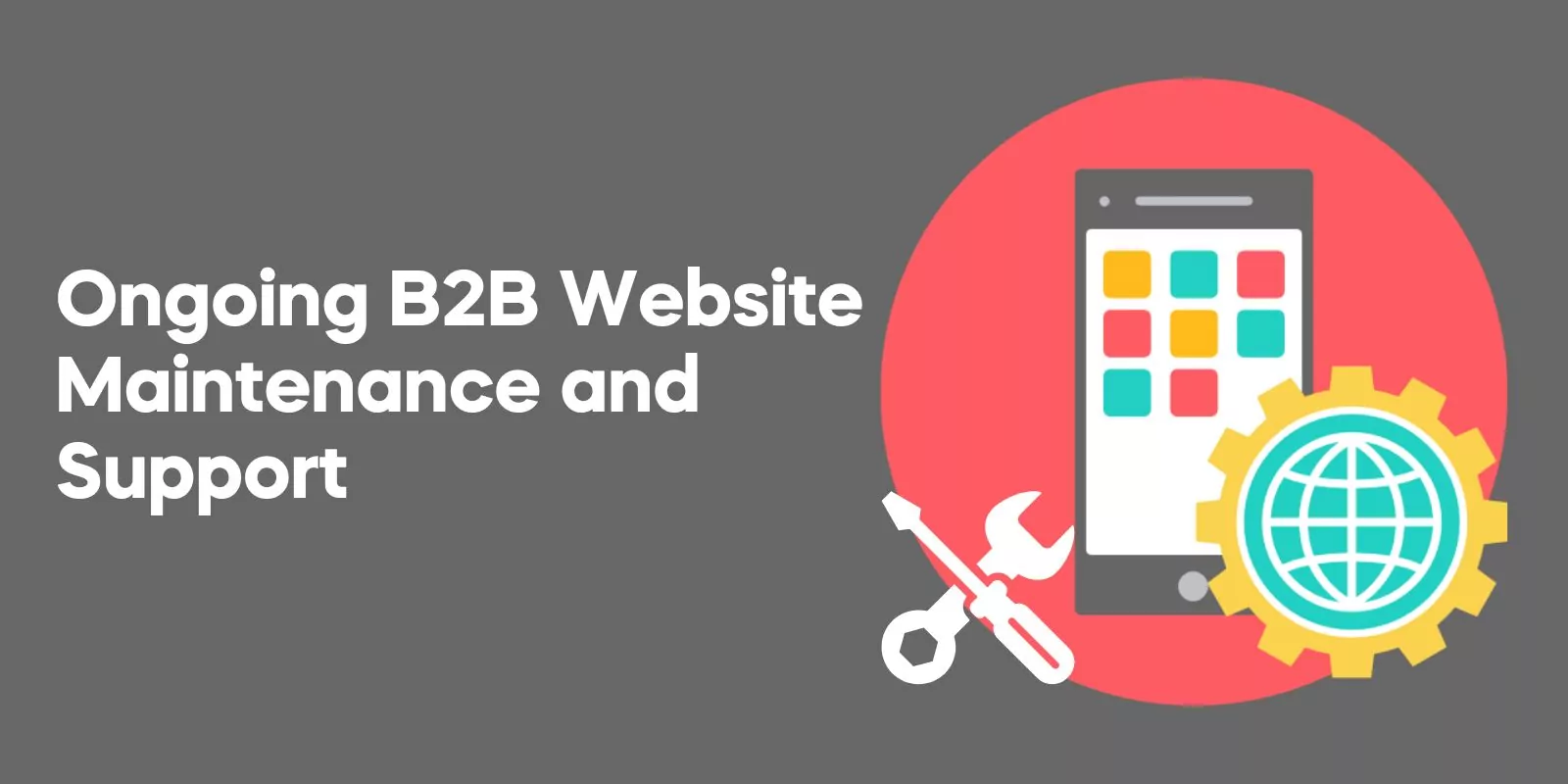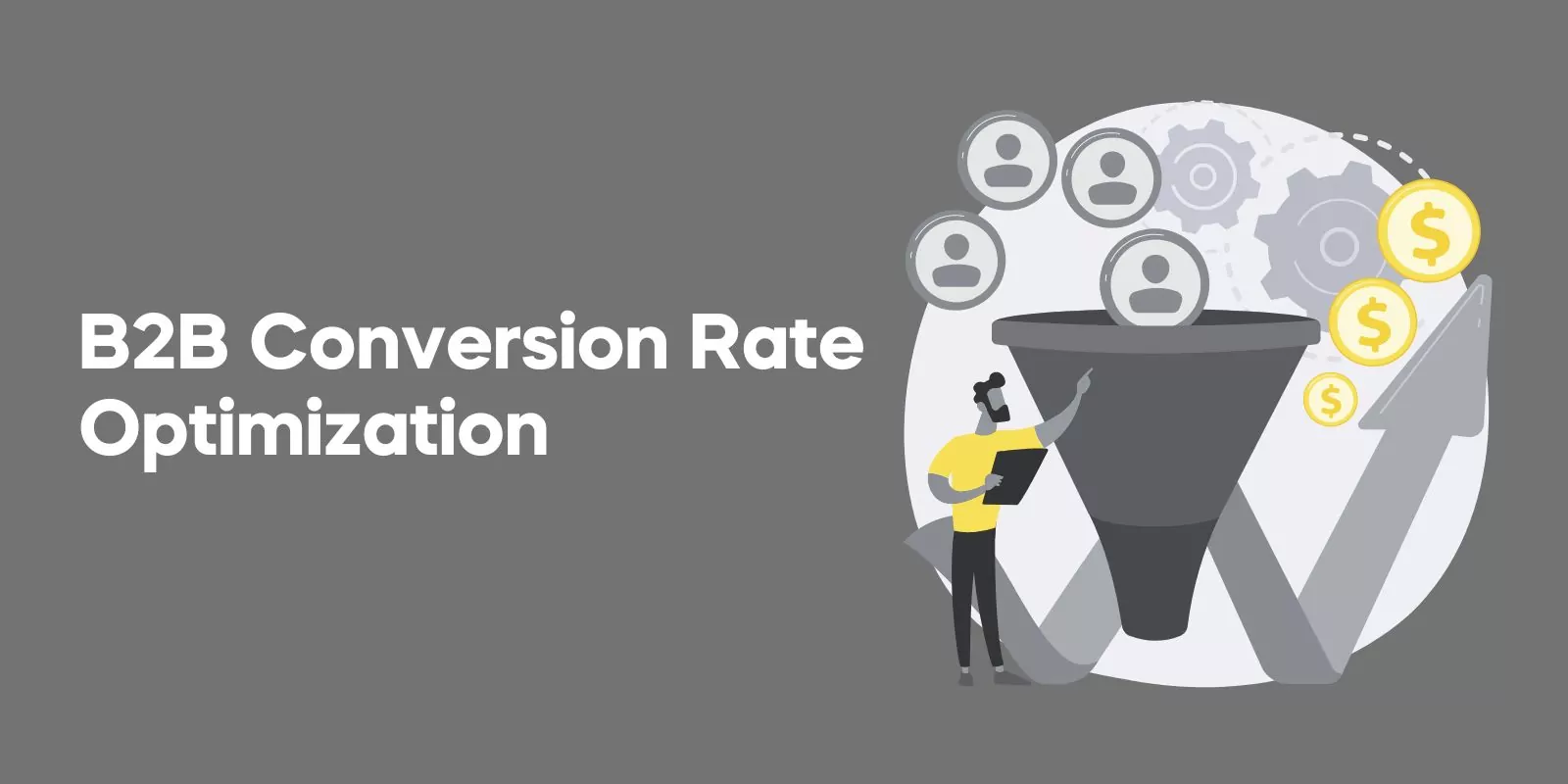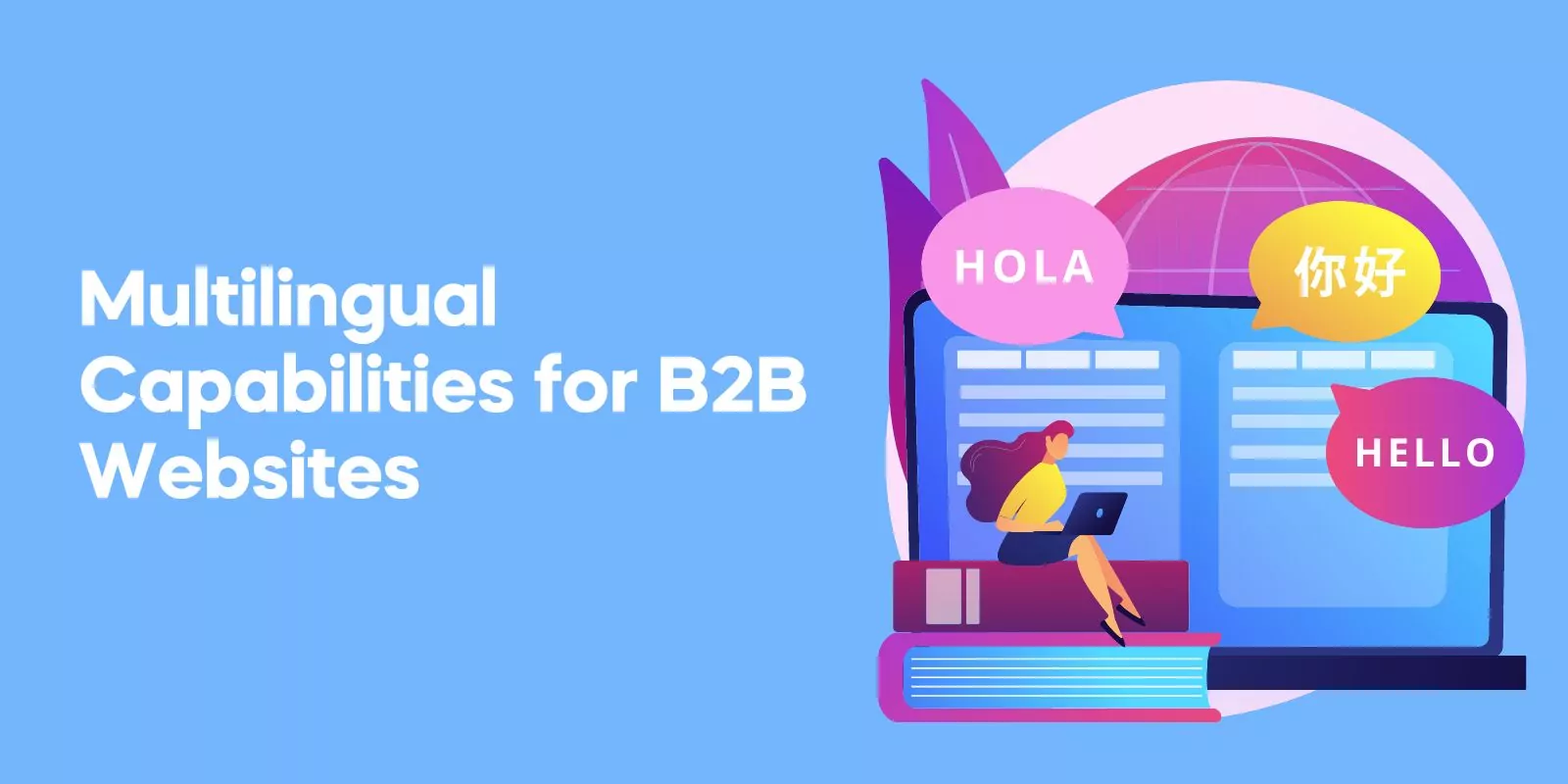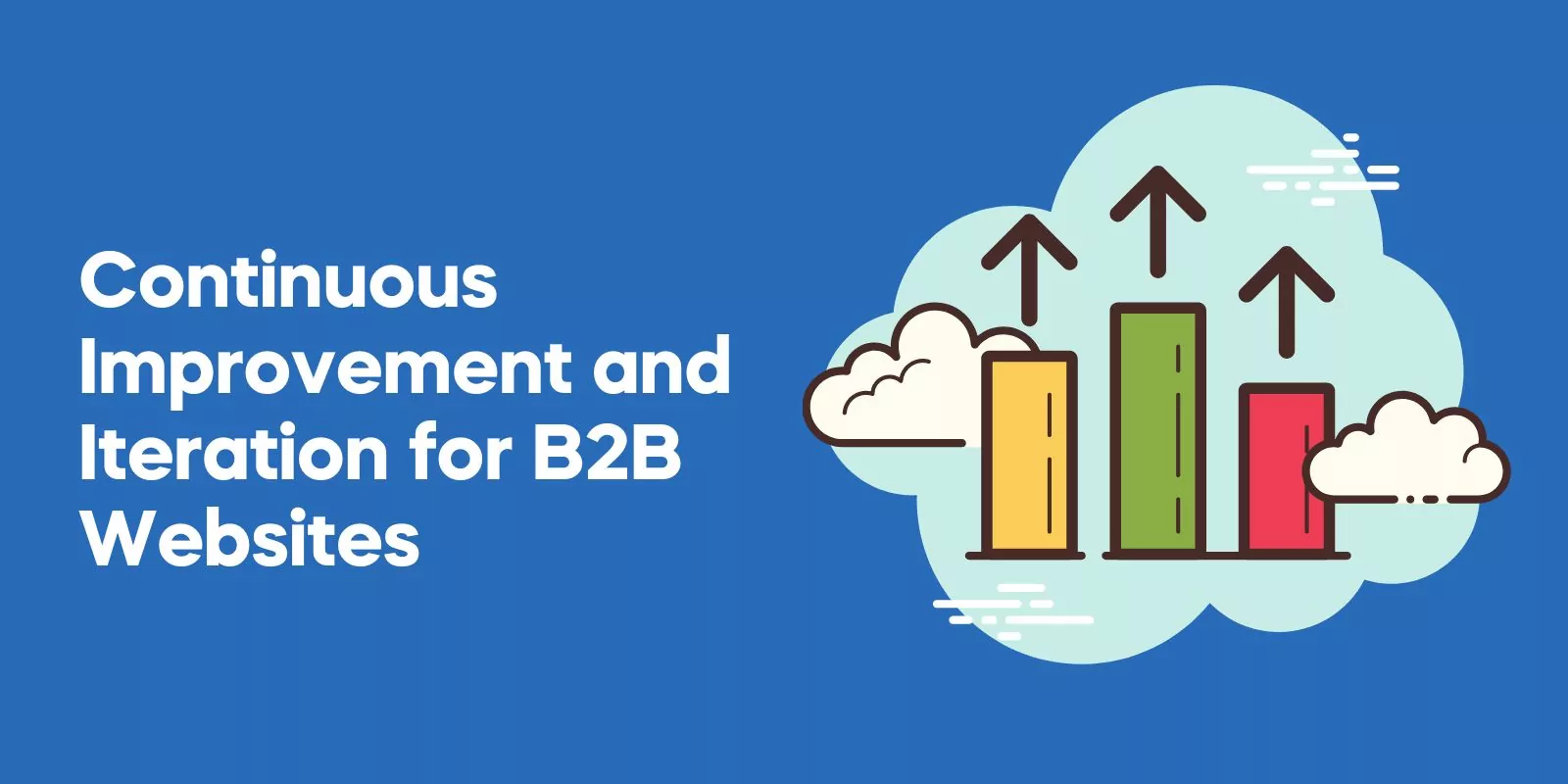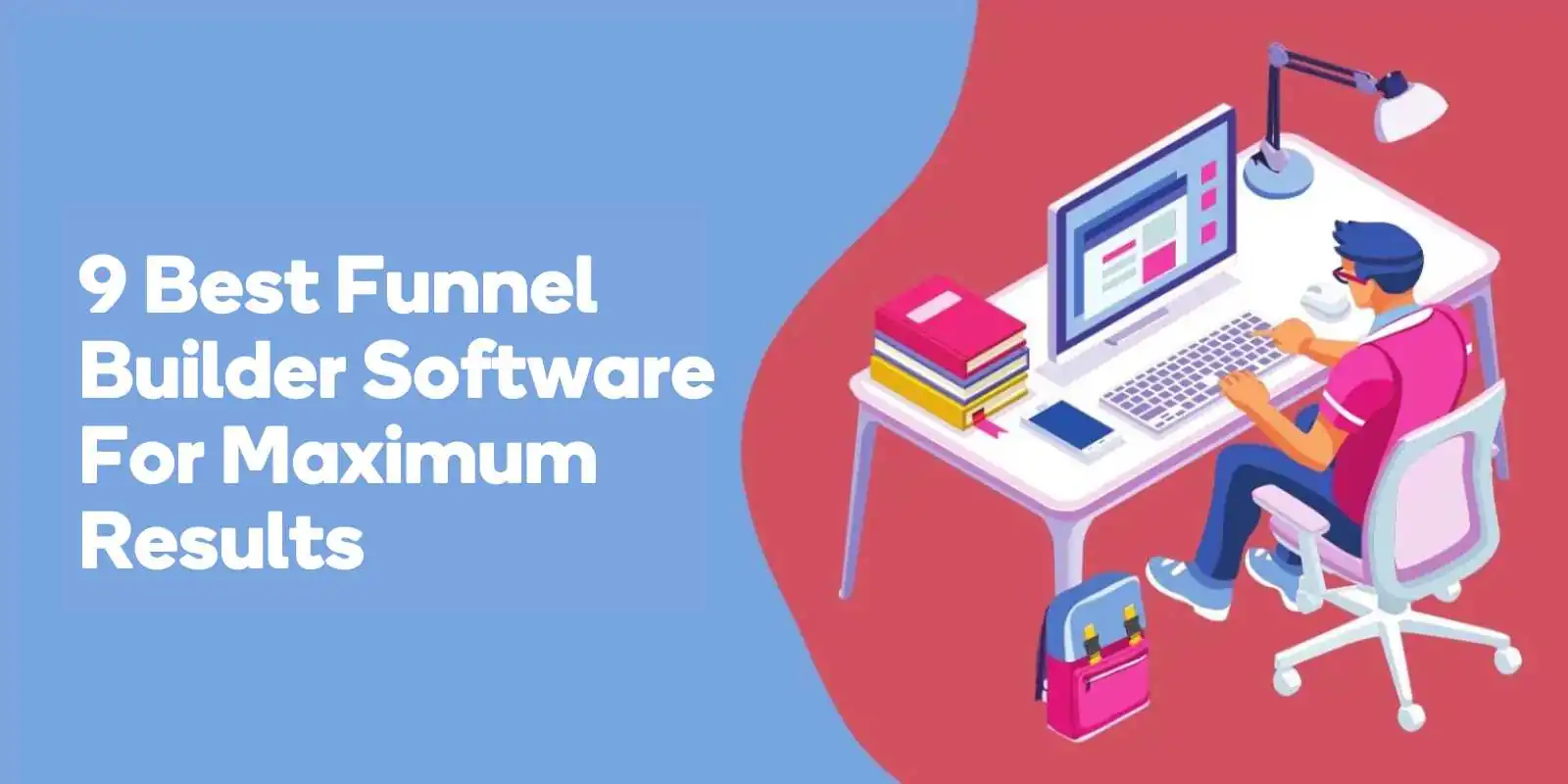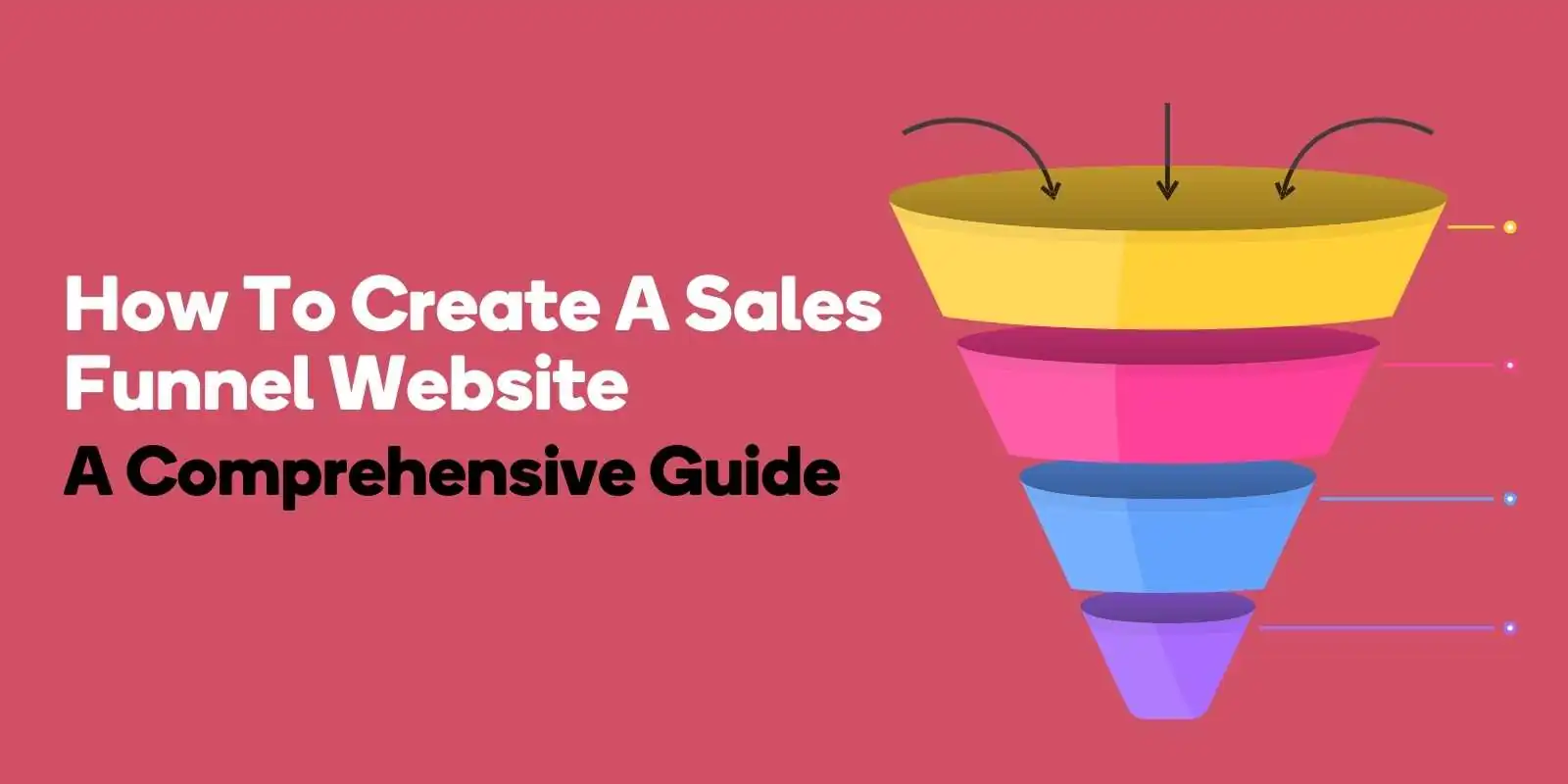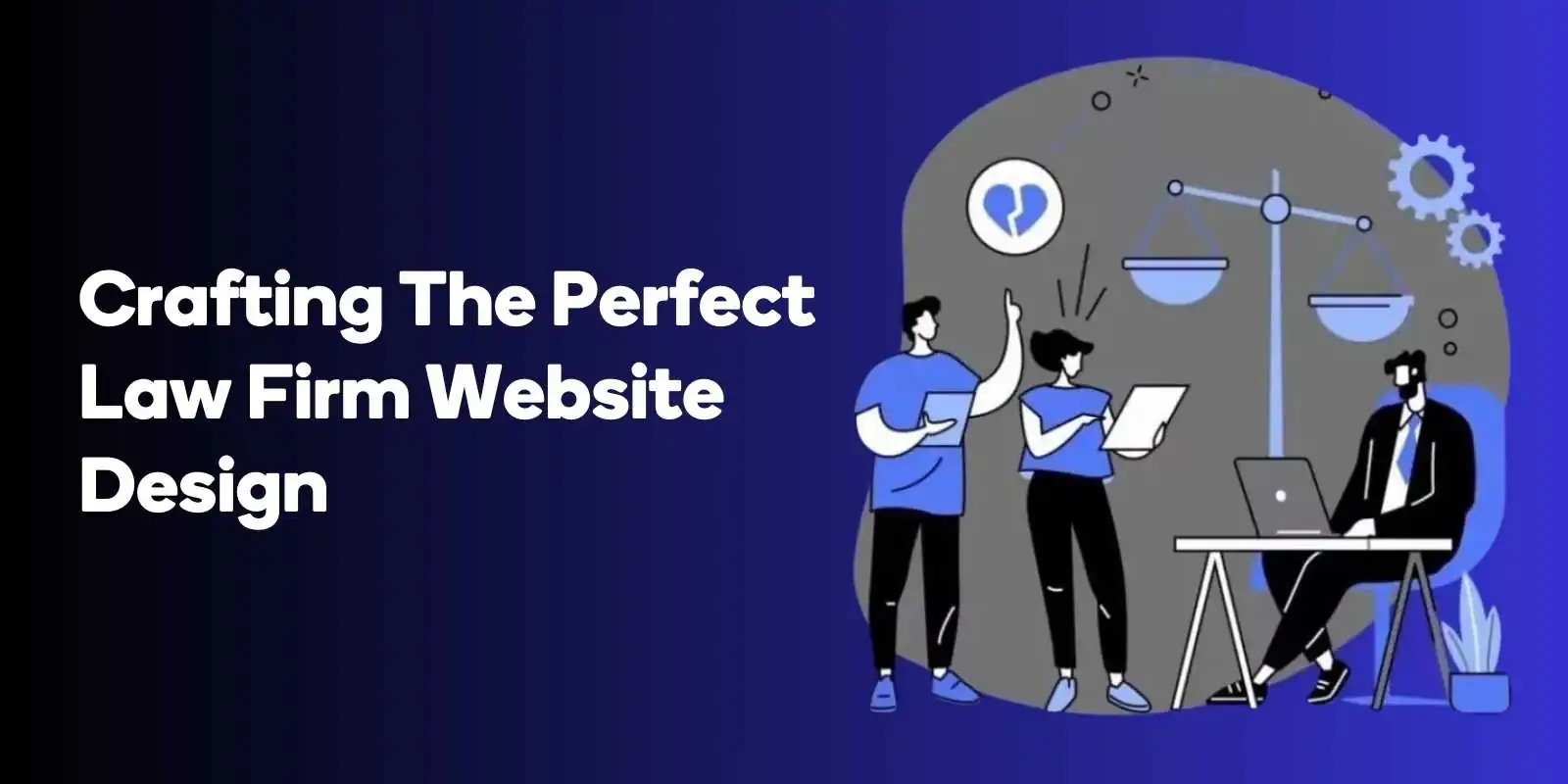In today’s fast-paced digital landscape, a well-designed B2B website is crucial for driving business growth.
As a business owner, you understand the importance of having a strong online presence. However, merely having a website is not enough.
To truly harness the power of effective web design, you need to work with a B2B web design agency that understands your unique needs and goals.
In this comprehensive blog post, I’ll explore key aspects of B2B web design and how they can contribute to your business growth.
Understanding Your Target Audience for B2B Web Design
Understanding your target audience is the foundation of any successful web design project.
By knowing who your customers are and what they want, you can create a website that caters to their needs and preferences.
Here’s 5 ways you can enhance your B2B website design and user experience:
- Research your target audience demographics and psychographics:
Understand the age, gender, location, income, and other demographic factors of your audience. Additionally, consider their values, attitudes, interests, and lifestyles to create more effective design elements that resonate with them. - Identify their pain points, needs, and expectations:Understand what challenges your audience faces, their unmet needs, and their expectations from your website. This will help you create a design that addresses these issues and provides a seamless user experience.
- Develop buyer personas to inform your web design decisions: Create fictional representations of your ideal customers based on your audience research. Use these personas to guide your design choices, ensuring your website appeals to the right people and meets their needs.
- Analyze competitor websites to understand industry standards:Look at the websites of successful competitors in your industry to identify trends, best practices, and areas where you can differentiate your website. This will help you create a more competitive and effective design
- Collect user feedback and insights to improve your website:Regularly gather feedback from users through surveys, usability tests, and analytics. Use this information to identify areas for improvement and make data-driven design decisions that enhance user satisfaction and engagement.
Stat: 80% of B2B buyers expect the same level of user experience as B2C websites.
B2B Website Design for User-friendly Navigation and Information Architecture
A well-organized, user-friendly website is essential for keeping your visitors engaged and guiding them towards making a purchase or taking another desired action.
Here’s 5 ways you can optimize your B2B website’s user experience:
- Design a clear and intuitive navigation menu:
Create a simple and straightforward navigation menu that helps users find the most important sections of your website quickly. Use clear labels and logical categorization to make it easy for users to understand and navigate through your site. - Create a logical and easy-to-understand information architecture:
Organize your website’s content in a way that makes sense to users, using clear headings, subheadings, and categories. This will help visitors easily locate the information they’re looking for and improve the overall user experience. - Ensure users can easily find the information they need:
Prioritize the most important content and features on your website and make them easily accessible. Use a clear visual hierarchy and well-placed calls-to-action to guide users towards the information they’re seeking. - Incorporate a search function for quick access to content:
Include a search bar or function that allows users to quickly find specific content on your website. This is especially important for larger sites with numerous pages, as it helps visitors locate information without having to navigate through multiple sections. - Implement a responsive design to ensure seamless browsing on all devices:
Make sure your website adapts to different screen sizes and devices, including desktops, tablets, and smartphones. A responsive design ensures that your content remains readable and accessible, regardless of how users choose to view your site, enhancing the overall user experience.
Stat: 94% of website users’ first impressions are design-related.
Compelling and Engaging Content for B2B Websites
High-quality, engaging content is a key component of B2B web design. It helps establish your brand as an industry authority and provides valuable information to your target audience.
Here’s 5 ways you can improve your B2B website’s content and search engine visibility:
- Develop a content strategy that addresses your audience’s needs and preferences:
Identify the topics and formats that resonate with your target audience and create a content plan that caters to their interests. By providing valuable and relevant content, you’ll keep users engaged and encourage them to return to your site. - Write informative, persuasive, and engaging copy:
Ensure your website copy is clear, concise, and compelling. Use persuasive language, address your audience’s pain points, and provide solutions to their problems. Engaging copy will help convert visitors into customers and improve your website’s overall performance. - Incorporate visual elements such as images, videos, and infographics:
Enhance your content by adding relevant visuals that support and complement your copy. Visual elements can help break up large blocks of text, make your content more shareable, and improve user engagement. - Regularly update your content to keep it fresh and relevant:
Continuously review and update your website content to ensure it remains current and useful. By providing up-to-date information, you’ll establish your site as a reliable resource and improve your chances of attracting repeat visitors. - Implement on-page SEO techniques to improve search engine visibility:
Optimize your content for search engines by incorporating relevant keywords, using descriptive and engaging meta tags, and creating SEO-friendly URLs. These practices will help improve your website’s search engine ranking, driving more organic traffic to your site.
Stat: B2B companies that blog receive 67% more leads than those that don’t.
B2B Website Lead Generation and Conversion Optimization
One of the main goals of a B2B website is to generate leads and drive sales. To achieve this, your web design should be optimized to encourage users to take action and convert into customers.
Here’s 5 ways you can optimize your B2B website to generate leads and drive sales:
- Design clear and compelling calls-to-action (CTAs):
Create visually appealing CTAs that stand out from the rest of your content and guide users towards taking the desired action. Use concise, action-oriented language to encourage visitors to click and convert. - Create dedicated landing pages for your marketing campaigns:
Develop targeted landing pages that focus on a specific product, service, or offer. These pages should be designed to provide all the necessary information and guide users towards conversion, without any distractions. - Implement lead capture forms to collect user information:
Include well-designed and strategically placed lead capture forms throughout your website. This will help you gather valuable user information, such as email addresses and phone numbers, which can be used for future marketing and sales efforts. - A/B test different design elements to optimize conversion rates:
Continuously test different versions of your website’s design elements, such as CTAs, headings, and images, to determine which combinations yield the highest conversion rates. By implementing the most effective design elements, you’ll maximize your website’s lead generation potential. - Monitor and analyze user behavior to identify areas for improvement:
Use web analytics tools to track user behavior on your site. This data can help you understand how visitors are interacting with your content, identify any issues or bottlenecks, and make data-driven decisions to improve the overall user experience and conversion rates.
Stat: 47% of B2B buyers view at least three to five pieces of content before contacting a sales rep.
Responsive B2B Web Design
With the widespread use of mobile devices, it’s essential for your B2B website to be accessible and functional across a variety of screen sizes and devices.
Here’s 5 ways you can optimize your B2B website for mobile devices:
- Implement a mobile-first design approach:
When designing your website, prioritize the mobile experience by starting with a layout and features optimized for smaller screens. This approach ensures that your site will be user-friendly on mobile devices, while still being adaptable for larger screens. - Ensure your website’s layout and navigation are optimized for mobile users:
Use responsive design techniques to create a fluid layout that adapts to various screen sizes. Simplify your site’s navigation, making it easy for mobile users to find what they’re looking for without excessive scrolling or pinching to zoom. - Test your website on various devices and browsers to ensure compatibility:
Regularly test your site on a range of devices, screen sizes, and browsers to identify any compatibility issues. Address any problems to ensure that all users have a consistent and positive experience, regardless of the device they’re using. - Monitor mobile user behavior to identify and address any issues:
Use analytics tools to track the behavior of mobile users on your site. Pay attention to metrics like bounce rate, session duration, and conversion rates to identify any areas where mobile users may be experiencing difficulties or dropping off. - Regularly update your website to accommodate new devices and technologies:
Stay informed about the latest developments in mobile technology and update your site accordingly.By adapting to new devices and features, you’ll ensure that your B2B website remains accessible and functional for all users, no matter which device they’re using.
Stat: Mobile devices account for over 50% of all web traffic.
B2B Website Brand Consistency and Visual Design
A consistent brand image is vital for building trust and credibility with your target audience. Your B2B web design should reflect your brand’s identity and values, creating a cohesive experience for visitors.
Here’s 5 ways you can maintain a consistent brand image through your B2B web design:
- Establish a clear visual identity, including logo, color scheme, and typography:
Develop a distinctive and memorable visual identity that represents your brand’s personality and values. This includes choosing a consistent logo, color palette, and typography that will be used throughout your website and other marketing materials. - Ensure your website’s design is consistent with your brand guidelines:
Adhere to your brand guidelines when designing your website to maintain consistency across all visual elements. This will help create a cohesive and recognizable brand image that builds trust and credibility with your target audience. - Use high-quality images and graphics that align with your brand’s aesthetic:
Choose images and graphics that not only complement your content, but also align with your brand’s visual identity. This will help reinforce your brand image and create a more immersive and cohesive user experience. - Create a consistent user experience across all touchpoints, both online and offline:
Strive for consistency not only within your website, but also across all customer touchpoints, including social media, email marketing, print materials, and physical locations. This will ensure that your brand is instantly recognizable and memorable, regardless of where your audience encounters it. - Regularly review and update your brand elements as needed:
Periodically evaluate your brand’s visual identity and make updates or refinements as necessary to ensure that it continues to effectively represent your company’s values and goals. This will help maintain a fresh and relevant brand image that resonates with your target audience.
Stat: 75% of users judge a company’s credibility based on its website design.
B2B Website Security and Privacy
In today’s digital world, website security and privacy are of utmost importance. Your B2B website must be secure and protect your users’ sensitive information, instilling trust in your brand.
Here’s 5 ways you can enhance your B2B website’s security and privacy:
- Implement SSL encryption to protect data transmission:
Secure your website with SSL (Secure Sockets Layer) encryption to ensure that any data transmitted between the user’s browser and your website is protected from unauthorized access. This will help build trust with your visitors and improve your site’s search engine ranking. - Regularly update software and plugins to patch security vulnerabilities: Keep your website’s software, content management system (CMS), and plugins up-to-date to protect against known security vulnerabilities. Regular updates will minimize the risk of cyberattacks and ensure that your site remains secure.
- Ensure your website complies with data privacy regulations, such as GDPR:
Familiarize yourself with data privacy regulations like the General Data Protection Regulation (GDPR) and ensure your website complies with these requirements. This includes obtaining user consent for data collection and providing clear privacy policies that outline how user data is stored, processed, and shared. - Conduct regular security audits to identify and address potential risks:
Perform periodic security audits to assess your website’s vulnerabilities and address any identified risks. This can include checking for weak passwords, outdated software, and unprotected sensitive data. Regular audits will help you maintain a secure website and protect your users’ information. - Educate your team on best practices for website security and privacy:
Provide training and resources to your team members to help them understand the importance of website security and privacy.Encourage them to follow best practices, such as using strong passwords, keeping software up-to-date, and being cautious with user data. An educated team will be better equipped to maintain a secure and trustworthy B2B website.
Stat: 43% of cyberattacks are targeted at small businesses.

Award-Winning
Sales Funnel & Website Expert
Discover How My Agency Can Grow Your Business
- Website: Our websites are the perfect blend of form and function.
- Sales Funnel: We build sales funnels that turn leads into customers.
- SEO: Get found online with our expert SEO services.
User Experience (UX) Design for B2B Websites
User experience is a critical factor in the success of your B2B web design. A well-designed website that provides a seamless and enjoyable experience will keep users engaged and encourage them to return.
Here’s 5 ways you can enhance your B2B website’s user experience:
- Conduct user research and testing to inform your UX design decisions:
Gather insights from your target audience through surveys, interviews, and usability testing to understand their needs, preferences, and pain points. Use these findings to inform your UX design choices and create a website that meets your users’ expectations. - Prioritize simplicity and ease of use in your website’s layout and navigation:
Create a clean, uncluttered layout with intuitive navigation that allows users to find the information they need quickly and easily. Avoid overwhelming users with too many options or complex features, and focus on delivering a straightforward and efficient browsing experience. - Implement user feedback and suggestions to improve your website’s UX:
Regularly collect feedback from users and incorporate their suggestions to enhance your website’s user experience. Actively addressing user concerns will demonstrate your commitment to providing a satisfying experience and help build trust with your audience. - Continuously monitor user behavior and make adjustments as needed:
Use analytics tools to track user behavior on your website, such as the pages they visit, the amount of time they spend on your site, and the actions they take.Analyze this data to identify trends and areas for improvement, and make data-driven adjustments to your UX design as needed. - Stay informed about the latest UX design trends and best practices:
Keep up-to-date with industry trends and best practices in UX design to ensure your website remains relevant and engaging.Adopting innovative design techniques and staying informed about user expectations will help you deliver a cutting-edge user experience that sets your B2B website apart from the competition.
Stat: 88% of users are less likely to return to a website after a poor user experience.
Search Engine Optimization (SEO) for B2B Websites
Effective SEO is crucial for driving organic traffic to your B2B website. By optimizing your website’s content and structure, you can improve its visibility in search engine results and attract more potential customers.
Here’s 5 ways you can enhance your B2B website’s SEO and drive organic traffic:
- Conduct keyword research to identify relevant search terms for your industry:
Use keyword research tools to discover the most relevant and high-traffic search terms related to your business. Incorporate these keywords into your website’s content and meta tags to improve your search engine visibility and attract targeted traffic. - Optimize your website’s content, metadata, and URL structure for SEO:
Ensure that your website’s content is well-structured, informative, and engaging, while incorporating relevant keywords. Additionally, optimize your meta titles, descriptions, and URLs to be descriptive and keyword-rich, which will help search engines understand and rank your pages more effectively. - Build high-quality, relevant backlinks to improve your website’s authority:
Establish a strong backlink profile by earning links from authoritative and relevant websites in your industry. This can be achieved through content marketing, guest blogging, and influencer outreach, among other strategies.High-quality backlinks will signal to search engines that your website is a valuable resource, boosting your site’s authority and search rankings. - Regularly monitor and analyze your website’s SEO performance:
Use analytics tools to track your website’s organic traffic, keyword rankings, and user engagement metrics. Analyze this data to identify trends, uncover opportunities for improvement, and make data-driven decisions to refine your SEO strategy. - Stay up-to-date with the latest SEO trends and algorithm updates:
Keep abreast of the latest developments in the world of SEO, including search engine algorithm updates, industry trends, and best practices.Adapting your SEO strategy to these changes will help you maintain your website’s search engine visibility and stay ahead of the competition.
Stat: 61% of marketers say improving SEO is their top inbound marketing priority.
B2B Website Load Speed and Performance
A fast-loading, high-performing website is essential for providing a positive user experience and maintaining a strong online presence.
Here’s 5 ways you can enhance your website’s performance and speed:
- Optimizing your website’s images, code, and other assets to reduce load times:
Compress and optimize images, minify CSS and JavaScript files, and streamline your code to reduce the amount of data that needs to be loaded, thus decreasing your website’s load times. Faster load times will improve user experience and contribute to better search engine rankings. - Implementing caching and content delivery networks (CDNs) to improve performance:
Utilize caching techniques to store and serve frequently used data more efficiently, speeding up your website’s load times. Additionally, implement a CDN to distribute your content across multiple servers around the world, ensuring faster delivery to users regardless of their location. - Regularly testing your website’s load speed and addressing any issues:
Use website speed testing tools to monitor your site’s performance and identify any bottlenecks or areas for improvement. Regular testing will help you maintain optimal load times and ensure a consistent, positive user experience. - Ensuring your website is optimized for performance on all devices and browsers:
Test your website’s performance and compatibility across various devices, screen sizes, and browsers. Ensure that your site loads quickly and functions smoothly on all platforms to provide a seamless experience for all users. - Monitoring website uptime and taking action to resolve any downtime issues:
Use website monitoring tools to track your site’s uptime and receive notifications when downtime occurs. Promptly address any issues to minimize the impact on your users and maintain a reliable online presence. A high-performing, always-available website will help build trust and credibility with your target audience.
Stat: A one-second delay in page load time can lead to a 7% reduction in conversions.
Integration with Marketing Tools and Platforms for B2B Websites
Seamlessly integrating your B2B website with various marketing tools and platforms can help streamline your marketing efforts and generate valuable insights for data-driven decision making.
Here’s 5 ways you can seamlessly integrate your B2B website with various marketing tools and platforms:
- Connecting your website with email marketing platforms for automated campaigns:
Integrate your website with email marketing platforms like Mailchimp or ActiveCampaign to automate email campaigns, manage subscribers, and track the success of your email marketing efforts. This will help you nurture leads, increase conversions, and build lasting relationships with your audience. - Integrating analytics tools to track user behavior and website performance:
Incorporate analytics tools like Google Analytics or Adobe Analytics into your website to track user behavior, traffic sources, and other key performance metrics. These insights will help you make data-driven decisions to optimize your website and marketing strategy for maximum impact. - Implementing customer relationship management (CRM) systems for lead management:
Connect your website with CRM systems like Salesforce or HubSpot to efficiently manage leads, track interactions, and maintain a comprehensive view of your sales pipeline. This integration will help streamline your sales process and improve your ability to convert leads into customers. - Embedding social media feeds and sharing buttons to encourage user engagement:
Add social media feeds and sharing buttons to your website to promote user engagement and amplify your content’s reach.This integration will help boost your brand’s online presence and foster a sense of community among your audience. - Utilizing marketing automation tools to optimize your marketing strategy:
Leverage marketing automation platforms like Marketo or Pardot to automate repetitive marketing tasks, segment your audience, and personalize your marketing efforts. By integrating these tools with your B2B website, you can improve the efficiency of your marketing campaigns and better target your audience’s needs and preferences.
Stat: 49% of businesses use marketing automation to save time and improve their marketing efficiency.
Accessibility and Inclusivity for B2B Websites
An accessible and inclusive website ensures that all users, regardless of their abilities, can access and interact with your content, promoting a positive brand image and expanding your potential customer base.
Here’s 5 ways you can create an accessible and inclusive B2B website:
- Adhering to Web Content Accessibility Guidelines (WCAG) standards:
Follow the WCAG guidelines developed by the World Wide Web Consortium (W3C) to ensure that your website is accessible to users with various abilities.These guidelines cover a range of recommendations, including text alternatives, adaptable layouts, and accessible navigation. - Implementing keyboard navigation and screen reader compatibility:
Ensure that your website is fully navigable using a keyboard and compatible with screen reader software, which allows visually impaired users to access and interact with your content.Properly structured HTML and ARIA (Accessible Rich Internet Applications) attributes can enhance the usability of your site for keyboard and screen reader users. - Ensuring your website’s color scheme is accessible to users with color vision deficiencies:
Choose a color scheme that maintains sufficient contrast between text and background colors, making it easier for users with color vision deficiencies to read and engage with your content. Use online tools to test and adjust your color palette for optimal accessibility. - Providing alternative text for images and multimedia content:
Include descriptive alternative text (alt text) for images, videos, and other multimedia elements to provide context for users who cannot see the visual content. This allows screen readers to convey the meaning and purpose of these elements to visually impaired users. - Regularly testing and updating your website to maintain accessibility standards:
Conduct periodic accessibility audits and testing to identify and address any issues that may arise as your website evolves.By regularly evaluating and updating your website, you can ensure that it remains accessible to all users, fostering a positive brand image and expanding your potential customer base.
Stat: 71% of people with disabilities will leave a website if it is not accessible.
Ongoing B2B Website Maintenance and Support
A successful B2B website requires ongoing maintenance and support to ensure its continued growth and effectiveness. Working with a dedicated web design agency can help you keep your website up-to-date and optimized for success.
Here’s 5 ways a dedicated B2B web design agency can help you maintain and optimize your B2B website:
- Regularly updating software, plugins, and themes to maintain security and functionality:
A web design agency will ensure that your website’s software, plugins, and themes are always up-to-date, reducing the risk of security vulnerabilities and ensuring that your site continues to function smoothly. - Conducting routine website audits to identify areas for improvement:
By regularly auditing your website, a web design agency can identify any areas that need attention, such as broken links, outdated content, or SEO issues. This helps to keep your website optimized and functioning at its best. - Monitoring and addressing website performance issues:
A dedicated web design agency will constantly monitor your website’s performance, identifying and resolving any issues that may arise, such as slow load times or downtime. This ensures that your website remains fast, reliable, and accessible to users at all times. - Keeping your content fresh, relevant, and engaging:
A web design agency can help you develop and implement a content strategy that keeps your website’s content fresh, relevant, and engaging for your target audience. This can include updating existing content, creating new content, and incorporating multimedia elements like images and videos. - Providing technical support and troubleshooting when needed:
When you work with a web design agency, you have access to a team of experts who can provide technical support and troubleshooting for any issues that may arise with your website. This ensures that any problems are quickly resolved, minimizing the impact on your users and your online presence.
Stat: 40% of users will abandon a website that takes more than three seconds to load.
Content Strategy and Development for B2B Websites
A robust content strategy is essential for keeping your B2B website engaging, informative, and relevant. High-quality content can help position your brand as an industry leader and generate organic traffic to your site.
Here’s 5 ways you can develop a robust content strategy for your B2B website:
- Identifying your target audience’s needs and preferences to inform your content strategy:
Understand your target audience’s pain points, interests, and preferences by conducting market research and gathering feedback. This will help you create content that addresses their needs and resonates with them, ultimately driving engagement and conversions. - Creating a diverse mix of content, including blog posts, whitepapers, case studies, and videos:
Offer a variety of content formats to cater to different audience preferences and learning styles. This diverse content mix can help showcase your expertise, engage your audience, and establish your brand as an industry leader. - Regularly updating and refreshing your website’s content to maintain relevance:
Keep your content up-to-date by revising outdated information, adding new insights, and addressing any changes in your industry or target audience. Regularly updating your content will ensure that it remains valuable and relevant to your users. - Implementing SEO best practices within your content to improve search engine visibility:
Optimize your content for relevant keywords, create informative and engaging meta tags, and use proper heading tags and internal linking to improve your website’s search engine visibility. By incorporating SEO best practices, you can attract more organic traffic to your site. - Measuring the performance of your content and adjusting your strategy accordingly:
Track the performance of your content using analytics tools to identify what resonates with your audience and what doesn’t.Analyze these insights to refine your content strategy, ensuring that your content continues to engage and inform your target audience effectively.
Stat: 72% of marketers believe that high-quality content is the most important factor in driving website success.
B2B Conversion Rate Optimization (CRO)
Optimizing your B2B website for conversions is crucial for turning visitors into leads and customers. A focus on CRO can help you identify and address any barriers to conversion, ensuring that your website is driving business growth.
Here’s 5 ways you can optimize your B2B website for conversions:
- Analyzing your website’s conversion funnel to identify areas for improvement:
Examine each step of your website’s conversion funnel, from attracting visitors to converting them into leads or customers. Identify any bottlenecks or drop-off points and address these issues to create a smoother user journey that encourages conversions. - Implementing A/B testing to determine the most effective design and content elements:
Use A/B testing to compare different design elements, content, and CTAs to determine which variations perform best in terms of driving conversions. By continuously testing and optimizing your website, you can improve its overall effectiveness and conversion rate. - Incorporating clear and compelling calls-to-action (CTAs) throughout your website:
Ensure that your website features strong, clear, and visually distinct CTAs that guide users toward the desired action, whether it’s signing up for a newsletter, downloading a resource, or making a purchase. Effective CTAs can significantly impact your conversion rates. - Optimizing your website’s forms and landing pages for lead generation:
Design user-friendly forms that request only the necessary information and create dedicated landing pages for your marketing campaigns. By simplifying and streamlining the lead generation process, you can increase the likelihood of visitors converting into leads. - Regularly monitoring and analyzing your website’s conversion performance:
Track your website’s conversion performance using analytics tools, and use the insights gathered to inform ongoing optimization efforts.By consistently monitoring and adjusting your strategies based on data, you can continuously improve your website’s conversion rate and drive business growth.
Stat: Companies that implement a structured approach to CRO are twice as likely to see a significant increase in conversions.
Stat: 52.2% of all website traffic worldwide in 2021 came from mobile devices.
Security and Data Protection for B2B Websites
Protecting your website and your users’ data is essential for building trust and maintaining your brand’s reputation.
Implementing robust security measures can help safeguard your website against cyber threats and ensure compliance with data protection regulations.
Here’s 5 ways you can protect your B2B website and your users’ data:
- Employing SSL certificates to encrypt data transmitted between your website and users:
Secure Socket Layer (SSL) certificates enable encryption of sensitive data exchanged between your website and its visitors. This helps protect user information, such as login credentials and personal details, from being intercepted by malicious actors. - Regularly updating software and plugins to protect against known vulnerabilities:
Keep your website’s software, plugins, and themes up-to-date to reduce the risk of security breaches. Updates often include patches for known vulnerabilities, ensuring that your site remains secure from potential threats. - Implementing strong password policies and user authentication measures:
Encourage the use of strong, unique passwords for user accounts and implement multi-factor authentication (MFA) to add an extra layer of security. These measures can help protect user accounts from unauthorized access and potential data breaches. - Ensuring compliance with data protection regulations, such as GDPR and CCPA:
Familiarize yourself with relevant data protection regulations, such as the General Data Protection Regulation (GDPR) and California Consumer Privacy Act (CCPA), and ensure your website complies with these standards. This can help protect your users’ data and maintain your brand’s reputation. - Monitoring your website for potential security threats and addressing them proactively:
Regularly monitor your website for signs of security threats, such as unauthorized access or suspicious activity. By proactively identifying and addressing potential risks, you can help safeguard your website and users’ data from cyber threats.
Stat: Cybersecurity breaches cost businesses an average of $3.92 million per incident.
Scalability and Flexibility for B2B Websites
As your business grows, your B2B website should be able to grow with you. Designing your website with scalability and flexibility in mind can help you adapt to changing market conditions and accommodate future growth.
Here’s 5 ways you can design your B2B website with scalability and flexibility in mind:
- Choosing a flexible content management system (CMS) that supports growth and customization:
Select a CMS that offers a wide range of features, integrations, and customization options to accommodate your business’s changing needs. This will allow you to add or modify content, functionality, and design elements as your business evolves. - Employing a modular design approach to enable easy addition and modification of website features:
Utilize a modular design that allows you to easily add, remove, or modify components and features as needed. This approach enables you to adapt your website’s structure and functionality to meet changing demands and support future growth. - Opting for scalable hosting solutions to handle increased traffic and resource demands:
Choose a hosting provider that offers scalable solutions, such as cloud hosting or virtual private servers (VPS), to accommodate increased traffic and resource demands as your business grows.This ensures that your website remains fast and responsive, even as your audience and user base expand. - Regularly reassessing your website’s performance and functionality to identify areas for growth:
Continuously monitor your website’s performance, user experience, and functionality to identify areas for improvement and growth. By staying proactive and making regular updates, you can ensure that your website remains aligned with your business’s long-term goals and objectives. - Collaborating with a web design agency that understands your long-term business goals and objectives:
Work with a web design agency that has experience in building scalable B2B websites and understands your long-term business goals.This partnership can help you develop a website that is not only visually appealing and functional but also capable of adapting to your business’s future needs and growth.
Stat: 75% of businesses consider scalability as a top priority when selecting a CMS.
Multilingual Capabilities for B2B Websites
Expanding your B2B website’s reach to a global audience requires incorporating multilingual capabilities, ensuring that your content is accessible and relevant to users from various linguistic backgrounds.
Here’s 5 ways you can expand your B2B website’s reach to a global audience by incorporating multilingual capabilities:
- Identifying your target international markets and prioritizing language support accordingly:
Determine the languages and regions that are most relevant to your business and prioritize the addition of language support based on market potential and demand.This will ensure that your website caters to the needs of your most valuable international audiences. - Implementing a user-friendly language selection interface for easy navigation:
Provide a clear and intuitive language selection interface on your website, allowing users to easily switch between languages. This could be in the form of a dropdown menu, language flags, or a combination of both. - Ensuring proper translation and localization of your website’s content:
Work with professional translators and localization experts to accurately translate your website’s content and adapt it to suit the cultural context of your target markets. This includes not only textual content but also images, symbols, and other visual elements. - Adapting your website’s design and layout to accommodate different languages and scripts:
Ensure that your website’s design and layout can accommodate different languages and scripts, including those with varying text direction, character sets, and formatting. This may involve adjusting font sizes, line spacing, and other design elements to maintain a consistent user experience across all languages. - Regularly updating and maintaining your multilingual content to ensure accuracy and relevance:
Keep your multilingual content up-to-date and accurate by regularly reviewing and updating translations as needed.This will help maintain the quality and relevance of your content for users in different linguistic markets, ensuring a positive user experience and fostering trust in your brand.
Stat: 75% of consumers prefer to buy products in their native language, highlighting the importance of multilingual support.
Social Proof and Testimonials for B2B Websites
Including social proof and testimonials on your B2B website can help build trust and credibility with potential clients, showcasing your brand’s success and the value you bring to your customers.
Here’s 5 ways you can include social proof and testimonials on your B2B website to build trust and credibility with potential clients:
- Collecting and displaying customer testimonials and case studies on your website:
Showcase genuine, compelling testimonials from satisfied customers, as well as detailed case studies that highlight the solutions you’ve provided and the results achieved. This can help potential clients understand the value you bring to your customers and foster trust in your brand. - Featuring logos of prominent clients or partners to demonstrate your industry credibility:
Display logos of well-known clients, partners, or industry associations you’re affiliated with. This can help demonstrate your credibility and establish your brand as a trusted player in your industry. - Highlighting awards, certifications, and industry recognitions your brand has earned: Showcase any awards, certifications, or industry recognitions your brand has received to further bolster your credibility. This can help potential clients see that your brand is recognized for its quality, expertise, and achievements.
- Incorporating social media feeds to showcase your brand’s engagement and presence:
Embed social media feeds on your website to display your brand’s active engagement with customers and industry peers. This can help demonstrate your brand’s commitment to staying connected with your audience and keeping up with industry trends and discussions. - Encouraging user-generated content, such as reviews and ratings, to build trust and authenticity:
Promote the creation and sharing of user-generated content, such as reviews, ratings, or social media posts, to provide additional social proof and authenticity.This can help potential clients gain insights into the experiences of real customers and further build trust in your brand.
Stat: 92% of consumers trust recommendations from others, even if they don’t know them personally.
Continuous Improvement and Iteration for B2B Websites
The digital landscape is constantly evolving, and your B2B website should adapt accordingly. Adopting a mindset of continuous improvement and iteration can help you stay ahead of the curve and ensure your website remains effective in driving business growth.
Here’s 5 ways you can adopt a continuous improvement mindset for your B2B website:
- Regularly monitoring your website’s performance metrics and identifying areas for improvement:
Track key performance indicators (KPIs), such as user engagement, conversion rates, and bounce rates, to identify areas where your website can be improved. Use these insights to make data-driven decisions and prioritize your optimization efforts. - Conducting user testing and gathering feedback to inform your design and content updates:
Continuously collect feedback from users through surveys, interviews, and usability testing. Use this feedback to identify pain points and opportunities for improvement in your website’s design, content, and overall user experience. - Staying informed about industry trends and best practices in web design and development:
Keep up-to-date with the latest trends, tools, and best practices in web design, development, and user experience. Apply this knowledge to your website to ensure it remains current, effective, and competitive in the digital landscape. - Collaborating with a web design agency that embraces a growth-driven design approach:
Partner with a web design agency that focuses on continuous improvement and iterative design, ensuring that your website is always evolving and adapting to meet the changing needs of your users and your business. - Continuously refining your website’s user experience, content, and design to maximize its effectiveness:
Regularly review and update your website’s design, content, and user experience to ensure it remains engaging, relevant, and optimized for your target audience.By embracing a mindset of continuous improvement, you can drive long-term success and growth for your B2B website.
Stat: Companies that prioritize continuous improvement and iteration are 26% more likely to have a high-performing website.
Frequently Asked Questions
What is B2B web design?
B2B (business-to-business) web design refers to the process of designing and developing websites specifically for businesses that sell products or services to other businesses, rather than to individual consumers.
B2B websites must cater to the needs and expectations of decision-makers in professional roles, focusing on factors like reliability, cost-effectiveness, and comprehensive product/service information. They often include sections for case studies, whitepapers, testimonials, and industry news to establish trust and authority.
What makes a good B2B website design?
A good B2B website design:
- Provides Clear Information: It should clearly communicate what the business does, who it serves, and how it can help the visitor.
- Credibility and Trust: Includes elements like testimonials, case studies, client logos, and accreditations to build trust.
- User-Friendly Navigation: Ensures easy navigation to help users find the information they’re looking for quickly and efficiently.
- Lead Generation Elements: Incorporates strategic call-to-action (CTA) buttons, contact forms, and newsletter sign-ups for lead generation.
- Responsive Design: Ensures the website is mobile-friendly as business decisions are often made on-the-go.
- SEO Optimized: Follows SEO best practices to improve visibility in search engine results.
How do I create a B2B website?
Creating a B2B website involves several steps:
- Define Your Audience: Understand who your potential business customers are and what they’re looking for.
- Plan Your Content: Content is crucial for B2B websites. Plan your content around the needs of your audience and the solutions you provide.
- Design With the User in Mind: Your website should be easy to navigate, with a professional and clean design that builds trust.
- Develop the Website: Whether you’re coding it yourself or using a platform like WordPress, the development phase brings your design to life.
- Test the Website: Before launching, test your website on various devices and browsers to ensure it works properly.
- Optimize for SEO: Use appropriate keywords, meta tags, and other SEO techniques to help your site rank higher in search results.
- Track and Analyze: Use tools like Google Analytics to track user behavior, website traffic, and other metrics for ongoing optimization.
What are the 4 types of B2B?
The four types of B2B transactions are:
- B2B Companies: These are companies that sell products or services directly to other businesses.
- B2B Marketplaces: These are platforms that connect different businesses for buying and selling opportunities.
- B2B Distributors: These businesses act as a link in the supply chain, buying products from manufacturers and selling them to retailers or other businesses.
- B2B Software Providers: These companies provide software solutions for other businesses, improving their efficiency or expanding their capabilities.
What are the 4 pillars of B2B marketing?
The four pillars of B2B marketing are:
- Targeting: This involves identifying and understanding the target audience or buyer persona.
- Positioning: This is about determining how the product or service will be perceived in the market and what unique value it offers.
- Content Marketing: This involves creating and distributing valuable, relevant content to attract, inform, and engage the audience.
- Measurement and Analysis: This pillar involves tracking key performance indicators (KPIs), analyzing results, and adjusting strategies based on those insights.
Conclusion
By addressing these additional aspects of B2B web design, you can create a comprehensive, adaptable, and engaging website that effectively supports your business’s growth objectives.
Collaborate with an experienced B2B web design agency to harness the power of web design and elevate your brand in the competitive B2B landscape.
Embrace the potential of a well-designed, data-driven, and customer-focused website to unlock new opportunities and drive sustainable success.

